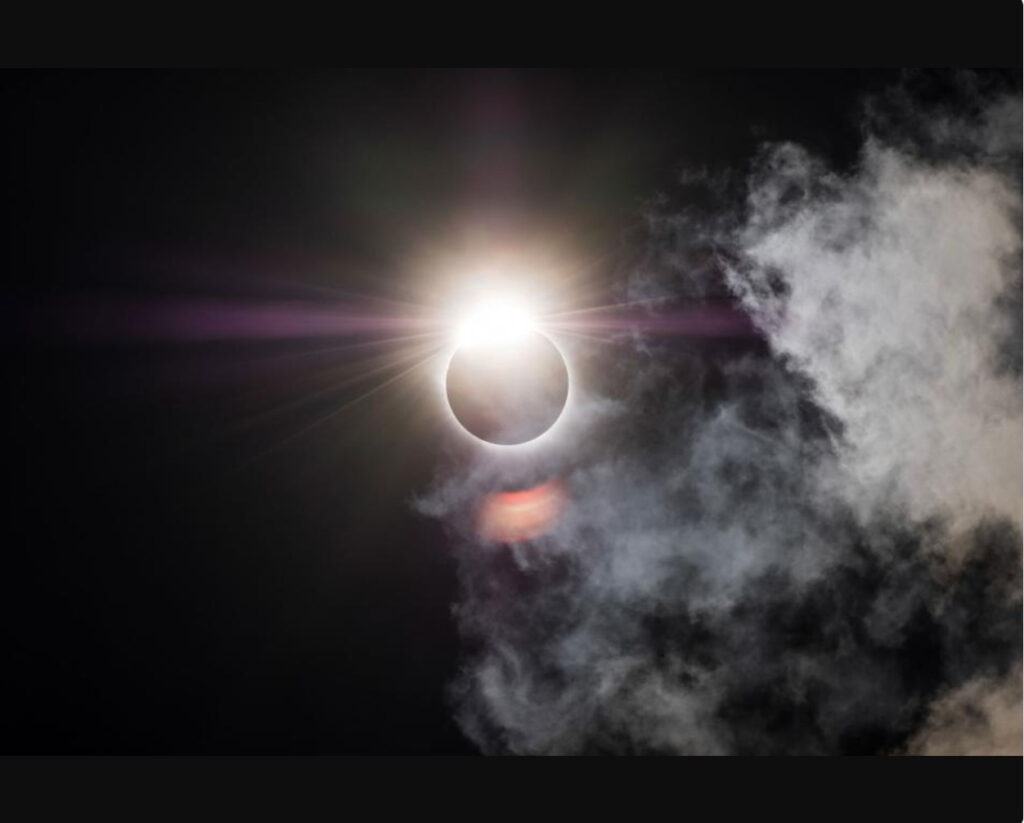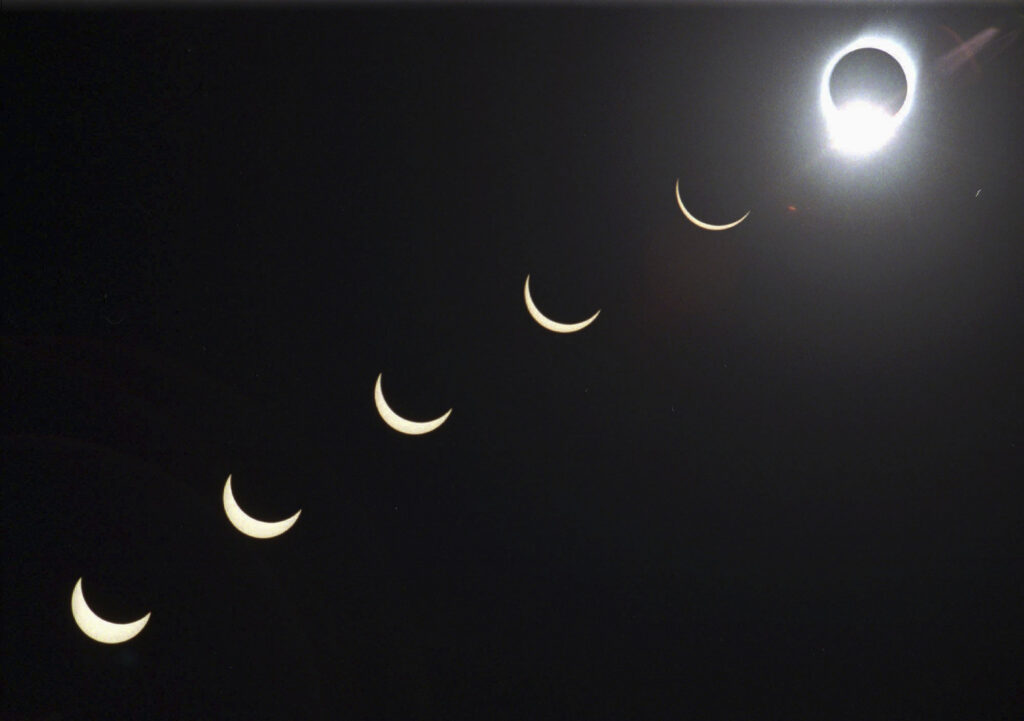People will brace themselves next month to experience one of nature’s best sights: turning day into night during a total eclipse of the sun.
The record-setting astronomical event will occur on April 8 for about 4 minutes and 28 seconds, beating the Great American Eclipse that darkened U.S. skies from Oregon to South Carolina for 2 minutes and 42 seconds in August 2017.

This year’s celestial spectacle has a busier route, making waves from Mexico’s Pacific coast in Mazatlan up through Texas and Oklahoma, zigzagging across Missouri, Illinois, Kentucky, Indiana, Ohio, Pennsylvania, New York, Vermont, New Hampshire, and Maine. Its final destination is Newfoundland, Canada, around 3:46 a.m. Eastern time before exiting out toward the Atlantic.
Forty-four million people live within the 115-mile totality where the eclipse will make its appearance across North America. According to the Great American Eclipse, more than 50% of the U.S. population resides within 250 miles of the eclipse’s path.
“I am so excited to actually get to see the corona, the atmosphere of the sun, the part of the sun that you get to see during totality,” Nicholeen Viall, a NASA mission scientist, said on a local news channel.
This eclipse is different from the 2017 one because the path of totality is wider and longer-lasting due to the sun being more magnetically active than usual.
Viall advises eclipse watchers never to look directly at the sun and to wear ISO-certified solar viewers, which have a filter that makes it safe to view the sun directly. Once the sky turns dark and the corona appears, it is safe to remove the eclipse glasses. One can also indirectly view the eclipse with a pinhole projector from NASA’s punch mission. This projects a crescent-shaped image of the eclipse on the ground.
“If you are in the path of totality, when the moon totally blocks out the main body of the sun, then it is safe to look directly at that phase of the eclipse. You will just see the wispy corona around the moon,” Viall said.

During the event, NASA scientists will conduct a few experiments. With NASA’s WB-57 research aircraft, one project will snap images of the eclipse 50,000 feet above Earth’s surface. This will help them observe how the sun affects Earth’s atmosphere and how it reacts to a decrease in light from the eclipse.
Below is NASA’s timetable of totality:
| Location | Partial Begins | Totality Begins | Maximum |
| Dallas, Texas | 12:23 p.m. Central time | 1:40 p.m. Central time | 1:42 p.m. Central time |
| Little Rock, Arkansas | 12:33 p.m. Central time | 1:51 p.m. Central time | 1:52 p.m. Central time |
| Cleveland, Ohio | 1:59 p.m. Eastern time | 3:13 p.m. Eastern time | 3:15 p.m. Eastern time |
| Buffalo, New York | 2:04 p.m. Eastern time | 3:18 p.m. Eastern time | 3:20 p.m. Eastern time |
| Burlington, Vermont | 2:14 p.m. Eastern time | 3:26 p.m. Eastern time | 3:27 p.m. Eastern time |
| Lancaster, New Hampshire | 2:16 p.m. Eastern time | 3:27 p.m. Eastern time | 3:29 p.m. Eastern time |
| Caribou, Maine | 2:22 p.m. Eastern time | 3:32 p.m. Eastern time | 3:33 p.m. Eastern time |
While full solar eclipses happen every one to two years, they are usually in desolate places. The next total solar eclipse will cross Greenland, Iceland, and Spain in 2026. North America won’t have totality until 2033, mainly in Alaska. In 2044, western Canada, Montana, and North Dakota will have one.
CLICK HERE TO READ MORE FROM THE WASHINGTON EXAMINER
The United States won’t see an eclipse coast to coast like this until 2045.
NASA will livestream the April 8 eclipse on its website from 1:00 to 4:00 p.m. Eastern time.
